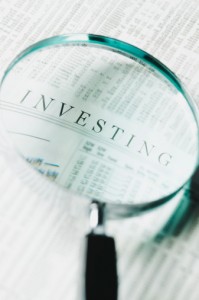
Margin of safety is one of the most important concepts in value investing and as such deserves a more in depth look and analysis.
As I have mentioned earlier in this book, your margin of safety is the difference between the price you pay for an asset and how much that asset is truly worth. Let’s take a quick look at another example for better understanding.
Imagine a suburban street with 3 identical houses on it. The house on the right sold a few months ago for $500,000 and the house on the left is on the market right now for $520,000. Yet, you are interested in the house in the middle. The previous owner has defaulted on the loan and the house is soon to be auctioned off. Your house is not in as good of a shape as the other two houses. In fact, it has been run down by the previous owner and you estimate that it will cost you about $75,000 to bring it back to the condition of the two adjacent houses.
On the day of the auction you are able to purchase the house for $150,000. With an additional $75,000 in repair costs, your true cost is $225,000. At the same time you know the true value of the house is about $500,000.
So, $500,000-$225,000=$275,000 Is Your Margin Of Safety
By definition, the $275,000 or 55% discount from the true value of the said house becomes your Margin Of Safety. It becomes your safety net to prevent any losses, it becomes your security blanket against adverse developments and it becomes your possible profit margin.
What if it takes $150,000 to fix everything up instead of $75,000. That’s fine you are still in the black. What if you find out that there is an additional $50,000 lean against the house? That’s fine, you are still in the black. Your margin of safety on this house will protect you against various unpleasant developments to the tune of $275,000. Yet, an important question still lingers.
Is the Margin Of Safety your insurance policy or is it your profit margin?
Well, it is both and that is why it is so important when it comes to value investing. First and foremost, margin of safety is your insurance policy. As Warren Buffett so famously said “Investing rule number one…never lose money. Investing rule number two…..never forget rule number one”. Basically, the margin of safety is there to protect you against any losses and unforeseen events.
We live in a complex world where your fundamental analysis will not always be right. You will not always be able to predict unforeseen or as insurance industry calls them “Act Of God Events”. Should such events occur your investment will have a large cushion built into it to protect you against significant losses.
It is only after acting as an insurance policy does Margin Of Safety becomes your profit margin. Technically speaking, your asset should appreciate to its true value. As with the real estate example above your margin of safety of $275,000 becomes your profit if/when you decide to sell the house. Yet, that is not always the case in the stock market. When we deal with publicly traded companies the situation becomes a lot more complex.
Did you enjoy this article? If so, please share our blog with your friends as we try to get traction. Gratitude!!!





